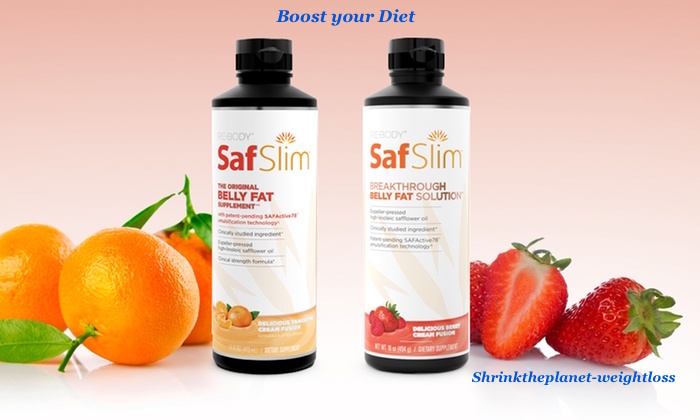Weight Loss is just the beginning:
Optimizing digestive function impacts a wide range of body systems, which is why blood type diets help resolve problems like internal inflammation, nutrient malabsorption, immune system dysfunction and hormonal imbalance, D’Adamo notes. The biggest improvements we see involve autoimmune thyroiditis, psoriasis and other skin problems and fatigue. These conditions normally result from having had a compromised eliminative process, so it makes sense that they improve with the switch to optimal foods.
“When I was in my 40s, I started to fall apart,” recalls Wendy Minotti, 52. “But as soon as I started eating for my blood type, my hormones seemed more balanced. I lost weight. My chin no longer breaks out and my skin is firmer.”
Blood Types at a Glance:
Blood Type O:
High levels of stomach acid help this blood type, which descended from hunter-gatherers, easily process all kinds of meat.
Blood Type A:
As people began cultivating crops, their microbiomes adapted to allow for the optimal digestion of all kinds of plant foods.
Blood Type B:
Type Bs, descendants of nomadic tribes that raised herbs to survive, are efficient digesters of plant foods and red meat.
Blood Type AB:
Type Abs arose from the comingling of A and B populations, and as a result, harbor digestive advantages of both types.
If you are Blood Type B
Then follow the lead of Wendy Minotti, who remembers how her figure and confidence were shot after having five children. “I stretched my body out so many times, it wasn’t even funny,” shares Wendy, who tried to get back in shape by living on salads. The approach backfired, though – she was never satisfied and would sometimes resort to eating three grilled cheese sandwiches just to curb her midday hunger.
Wendy’s realization that weight loss didn’t have to involve deprivation came after watching a friend unwrap Blood Types, Body Types and You at a birthday party. She adopted the way of eating and was stunned when just one sandwich on oatmeal bread left her feeling full.
Soon Wendy’s cheekbones emerged, and her joint aches, facial rashes, allergies, depression and hot flashes disappeared. Even her formerly saggy skin looked tighter. “It’s not just a losing weight thing,” Wendy raves. “It’s a looking younger thing. It’s the best anti-aging method I’ve ever found!”
Your Slimming Strategies – Blood Type B
Type B probably came into being as a mutation that occurred when Type Os moved into harsher climates like the Himalayas. These nomads herded and domesticated animals, so they lived on meat and dairy, as well as produce. Type Bs do well on animal and vegetable foods, but have problems with some foods that can be resolved with smart choices.
1. Favor lean red meat (like lamb, venison and beef) and fish (like salmon, cod, flounder and halibut). And choose turkey over chicken since the latter contains a protein that can interfere with metabolism in Type Bs. Ask a B about the biggest thing they get out of this diet, and they will say it taught me not to eat chicken, and I’m never going to go back.”
2. Enjoy dairy. “The basic sugar in the Type B molecule is D-galactosamine, the same sugar present in milk. This compatibility lets Bs thrive on three to four servings of yogurt and cheese and up to five serving of milk each week. (If you are lactose intolerant, incorporate cultured fare like yogurt and kefir into your diet for two weeks their probiotics enhance the gut’s ability to break down lactose so you can gradually introduce other dairy.)
3. Eat your fill of veggies (like leafy greens, beets, carrots, eggplant, peppers and sweet potatoes) and fruit (like bananas, cranberries, grapes, plums, watermelon, papaya and pineapple).
4. Have carbohydrates in moderation. Eat two to four servings of millet, oat bran, oatmeal, rice, rice bran or spelt weekly, and aim for up to two serving daily of cereals, pastas or bread made with these grains. But since corn, buckwheat, rye and wheat can lower Type Bs’ metabolic efficiency and trigger blood sugar imbalances, products that contain these grains should be avoided. Nuts and seeds can pose similar problems, so it’s best to avoid peanuts, sunflower seeds, and sesame seeds.
If you are Blood Type AB
Then follow the lead of Sharon Lewinter, who had struck out with countless diets before her mom clued her in to the blood-type approach. “I constantly felt bad about myself,” admits Sharon, who struggled with tiredness, bad skin, depression and varicose veins. “One day I was talking about my frustrations with my mom, and she mentioned a book that had been collecting dust in her attic – Eat Right 4 Your Type. I read it that night and got started the next day.”
As an AB blood type, the first few days on the plan were challenging for Sharon because she could no longer indulge in favorites like pasta, French fries and chicken,. But the immediate results she saw after eliminating these foods helped her power through. “I dropped 15 pounds in two weeks,” she says. “I’ve never seen results like that with nay diet!”
Flash forward three years: Sharon is 72 punds trimmer, still shedding inches and all the health issue that used to plague her have disappeared. Says Sharon, “It’s a miracle that I no longer struggle with any of the problems I used to – including my weight!”
Your Slimming Strategies – Blood Type AB
Type AB is the newest Blood type it emerged as population bearing both A and B blood types began to intermingle. And while Type ABs are prone to some of the same digestive traps that impact types A and B, they share some of the benefits, as well: As ABs combined type allows them to tolerate and digest a wide variety of foods that suit both type As and Type Bs.
- Fill your plate with veggies (aiming for three to five servings per day), seafood (such as cod, red snapper, salmon and tuna) and turkey. When eating red meat, make it more of a side dish. The intestinal makeup of type ABs doesn’t digest red meat efficiently, and as a result, meat is stored as fat. That’s why he advises limiting beef to no more than three 5oz. serving of lean cuts per week. Also avoid chicken since the same protein that makes it a problem for Type Bs can slow metabolism in Type ABs.
- Enjoy dairy. Type ABs share the Type B tendency to thrive on dairy food, especially options rich in digestion-enhancing probiotics like yogurt and kefir. This blood type also processes egg-form protein efficiently, so enjoy up to five eggs a week.
- Have carbohydrates in moderation. Type ABs do well on grains in general, and can tolerate occasional servicing of wheat germ and wheat, as well as four serving of millet, oat bran, oatmeal, rice, rice bran or spelt, and seven serving of bread, crackers or muffins each week. But since corn and buckwheat can disrupt AB digestion and lower metabolism avoid these grains and foods that contain them. Snack on fresh fruit. The best choices for Type AB individuals include cherries, grapes, plums, watermelon, figs and kiwifruit, which can be enjoyed up to three to four times per day. One to avoid: oranges. Type ABs have alkaline stomachs that are sensitive to the acids in this citrus fruit.
Get More Information on the Blood Type Diet and other Strategies for Your Blood Type.
Shop Now for Eat Right 4 Your Type: The Individualized Diet Solution to Staying HealthyBook.
-
Valuable
-
Helpful
-
Taste
-
Preparation



